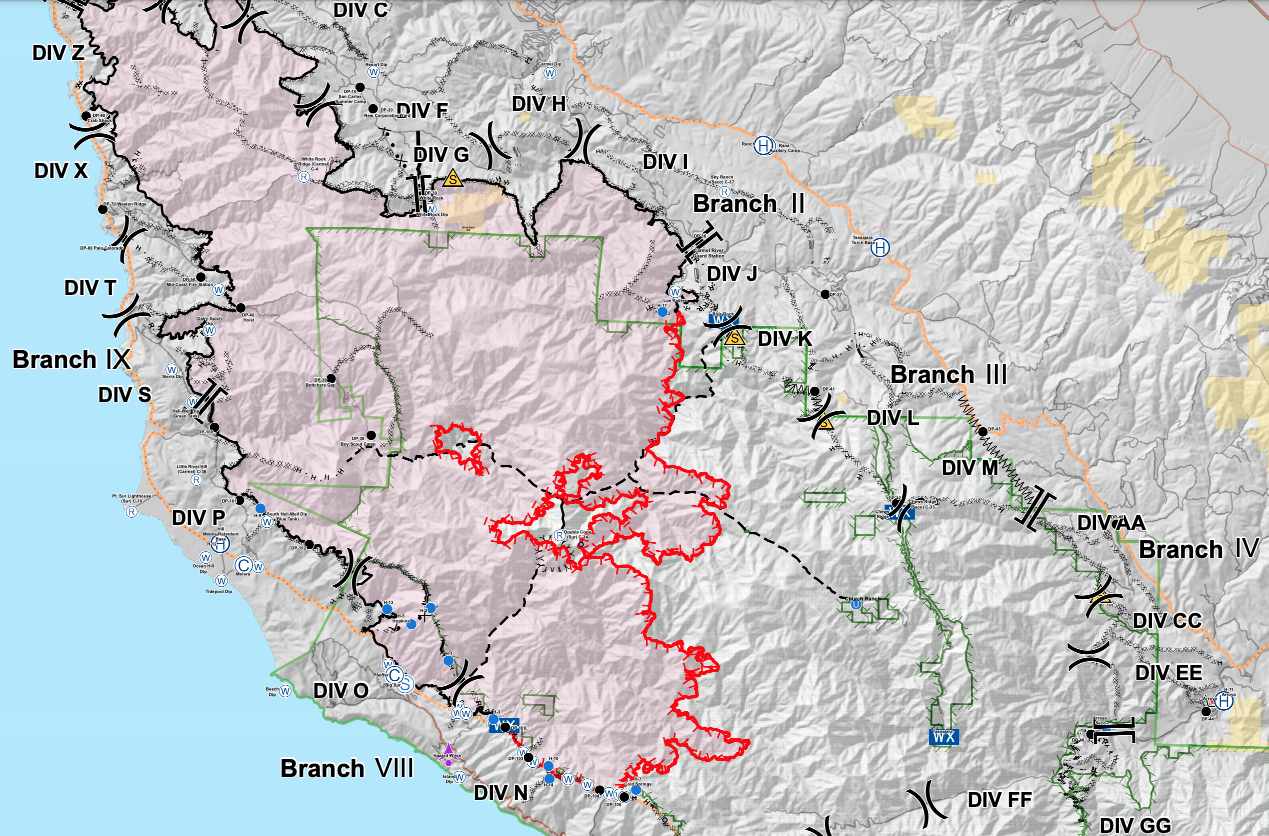Adam PrellJuly 13, 2021
If you live in an area prone to wildfires, one phrase you always listen for is “the fire is (x) percent contained.” A 95% contained fire sounds a lot less scary than a 5% contained fire. “Containment” indicates how much of the fire perimeter has been surrounded by a control line that the fire will not progress across. Rather than describing how much of the entire fire has been put out, containment refers solely to the perimeter itself and its potential for growth. On the maps, a red color indicates uncontained fire perimeter, and black is contained fireline.
Containment Versus Control
Containment is normally expressed as a percentage of the entire perimeter (the percentage of the black “contained” perimeter compared to the entire perimeter). A wildfire with 25% containment means control lines have been completed around 25% of the fire’s perimeter. Fire managers will not consider a portion of the fireline “contained” until they are confident that the fire will not grow further in that direction. The National Wildfire Coordinating Group defines control of a fire as:
The completion of control line around a fire, any spot fires therefrom, and any interior islands to be saved; burned out any unburned area adjacent to the fire side of the control lines; and cool down all hotspots that are immediate threats to the control line, until the lines can reasonably be expected to hold under the foreseeable conditions.
The public is often used to seeing containment increase continually as the fire progresses. Sometimes we get asked why containment slows on certain fires, especially when a fire has not seen growth in days. With the extreme conditions firefighters are more often dealing with, fire managers are taking extra precautions before changing a portion of the line to contained. Another reason is that fires burn in mountains in inaccessible terrain. In those areas it is difficult to establish a control line to use for adding to containment. For example the (at the time) most expensive fire in CA history, the Soberanes Fire, took 12 weeks to officially be called contained. It burned in mostly uninhabited Central Coast range where winter’s arrival was the only way to call portions of it contained.
The Soberanes Fire took until winter to be called officially contained by Fire Managers. Above is map from August (mid-fire) showing containment lines in black and uncontrolled line in red.
Containment means Progress not Safety
As containment increases, the public may wonder why road closures or evacuations remain in place. It’s important to note that containment does not mean a fire is out, or that the danger has passed. Although it is an indicator of progress, the containment percentage doesn’t always correlate to safety level around or within the fire. Like with the Soberanes Fire, a fire itself may still burn within the interior for many weeks. Closures often remain in place long after containment is reached to keep the public safe and to give the land a chance to heal.